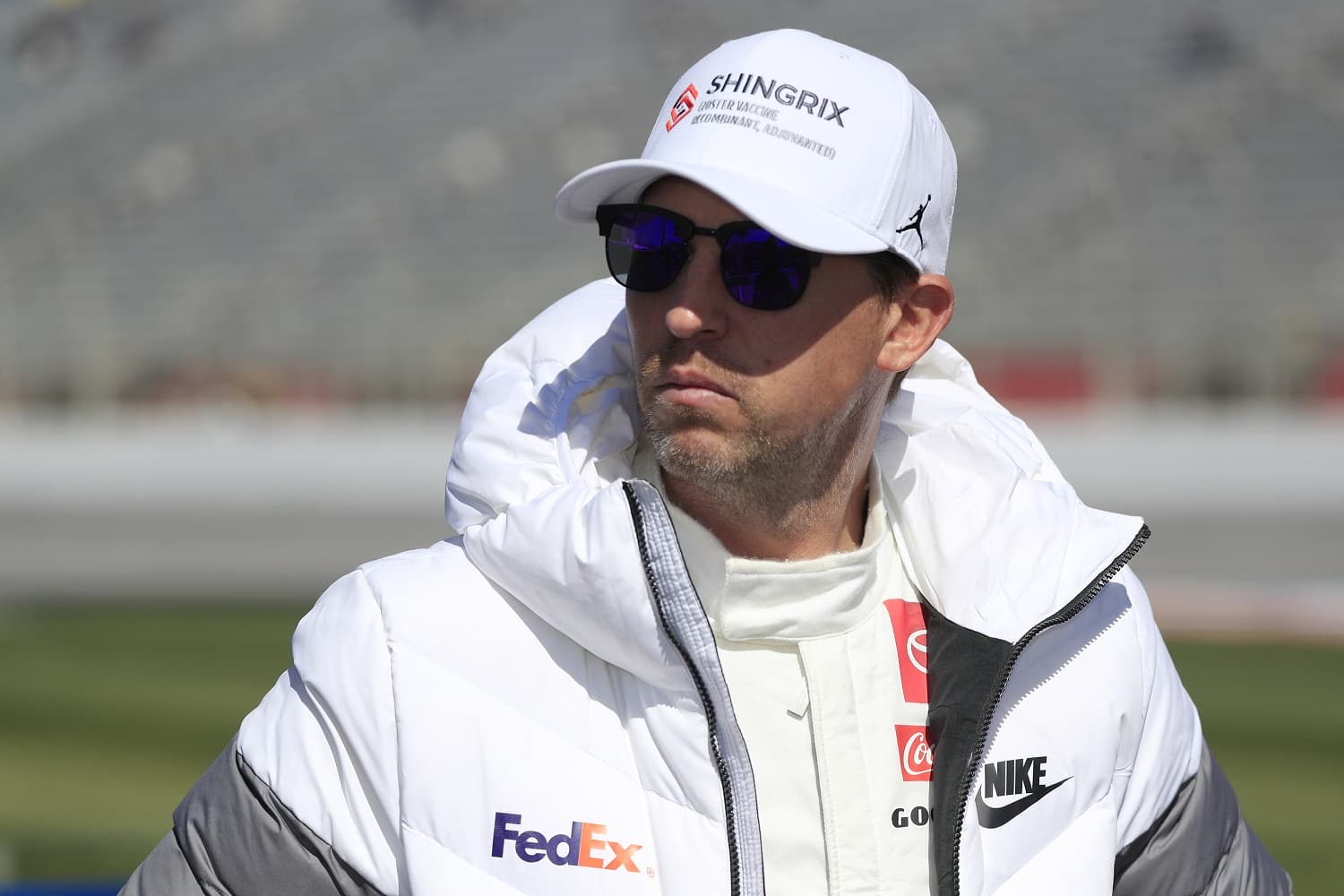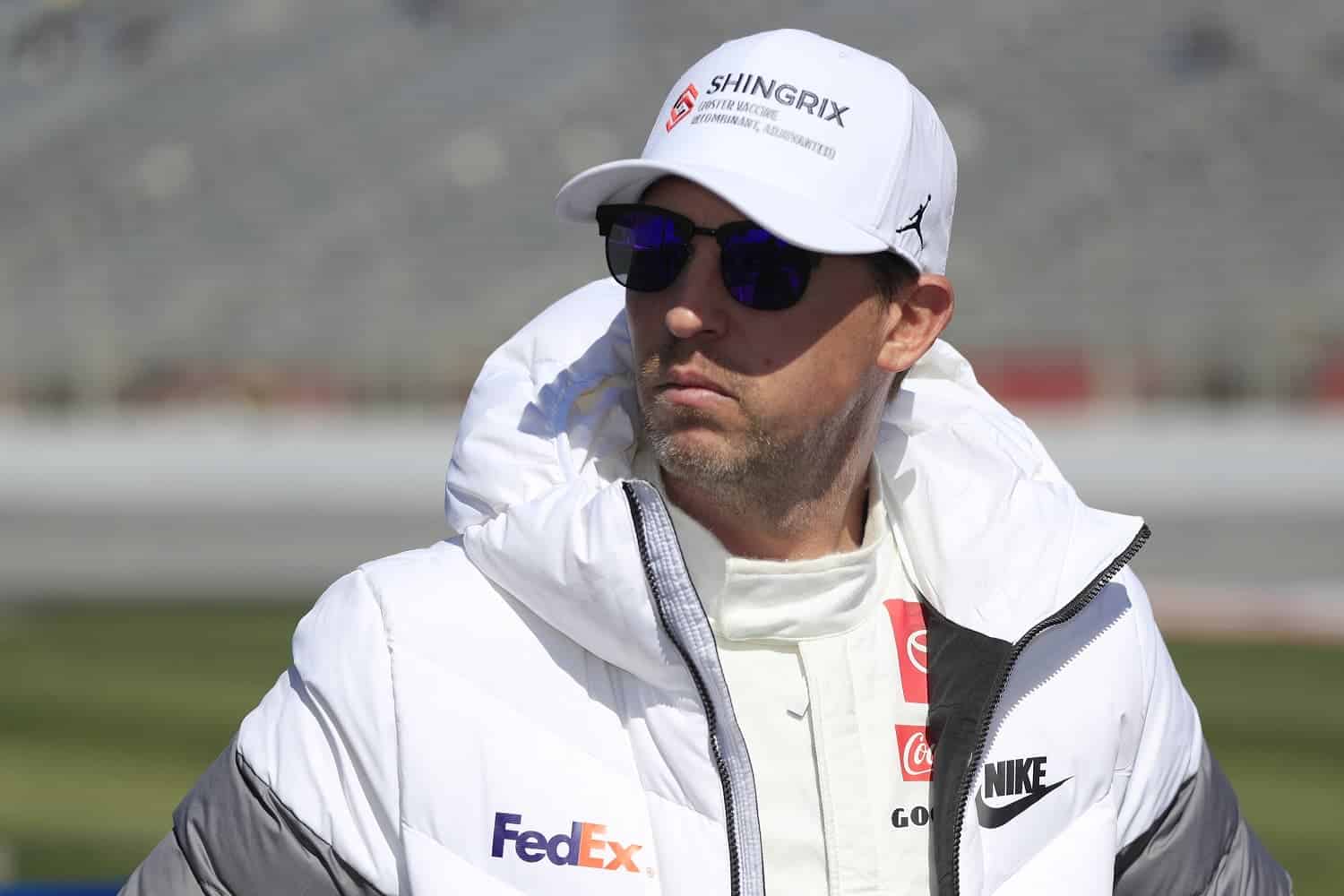NASCAR
Denny Hamlin’s Take on an Unpopular Rule Will Rile Longtime NASCAR Fans

Atlanta Motor Speedway weekend is the wrong time to ask if stage racing is unnecessary. It’s on the same level as confirming the sky is blue, water is wet, and a lot of NASCAR fans don’t care for Denny Hamlin.
Hamlin, the driver of the No. 11 Toyota, may have made it worse on himself with his take on stage racing during an Actions Detrimental podcast, but he was never going to win the Most Popular Driver Award anyway. The thing is, though, he’s not wrong. NASCAR needs stage breaks even if fans don’t.
The difference between stops in stage racing and traditional cautions

NASCAR introduced stage racing in 2017, breaking races into three segments (it’s four for the Coca-Cola 600 marathon). Winners of the first two stages earn a playoff point apiece, and cars placing in the top 10 score regular-season points on a 1-to-10 scale.
Over a 26-race regular season, those points can add up and affect who makes the playoffs. Don’t believe it? Ross Chastain scored six stage points and Denny Hamlin none in the Martinsville playoff race, which set the field for the Championship 4. The difference in the standings at the end of that race was exactly six points. Chastain made the Championship 4, and Hamlin didn’t.
The stage breaks come hand-in-hand with caution flags that count against the start of the next stage, which eats into live action. Even if NASCAR wanted to keep awarding the points without throwing the caution flag at the end of the stage, the control tower could easily keep tabs on places when the green-checkered flag comes down.
Racing cautions are a different matter. Whether it’s for debris on the track or because “The Big One” happens on a superspeedway, the stoppage is almost always going to be at least as long as a stage caution.
That plays into why Hamlin says stage racing on ovals is here to stay, even as NASCAR has done away with them on road courses.
Denny Hamlin: ‘Stage racing is a good thing’
Stage racing understandably frustrates long-time NASCAR fans. Though it bunches up the field for the restarts, making for more competitive racing, the rule penalizes fast cars. A driver who’s 1.5 seconds ahead with five laps left in a stage has no incentive to try extending the margin to two seconds.
Still, Denny Hamlin stands somewhere between tolerating and defending stage racing.
“A), it’s good for our TV partners, they know when cautions are coming,” Hamlin said on his Actions Detrimental podcast. “They can plan those commercials. And B), we do strategize around the stages, so I think it’s an absolute must. We see it at speedways, it’s a game-changer. People are racing now instead of running up against the wall for 180 of 200 laps.”
Realistically, one of those two considerations is more important to the financial well-being of the sport. The TV partner aspect is the main catalyst for stage racing.
Stage racing allows Fox and NBC to cut away to commercials at a predictable moment and for a predictable amount of time without missing green-flag laps. Those commercials help the networks pay the rights fees that allow NASCAR and its teams to pay the bills.
Atlanta Motor Speedway has changed completely
The reason stage racing is an especially sensitive subject when the NASCAR Cup Series comes to Atlanta Motor Speedway now is that the overhaul of the track before the 2022 season completely changed it. A 1.5-mile track not much different than most other intermediate tracks suddenly became a superspeedway.
Two important sets of numbers related to the change:
- From 2016-21, seven Atlanta races averaged 4.7 cautions, including stage or competition cautions. Last year’s two races averaged 12 cautions.
- In the same timeframe, Cup Series races averaged 18.4 lead changes. The number soared to 36.5 in 2022.
On the surface, that suggests exciting racing. Realistically, many cautions created two lead changes – one when the leader pitted and the other when the new leader cycled through to his own pit stop or was passed by a better car soon after moving out front.
Stage cautions add to the issue, further aggravating a lot of fans.
Got a question or observation about racing? Sportscasting’s John Moriello does a mailbag column each Friday. Write to him at [email protected].











